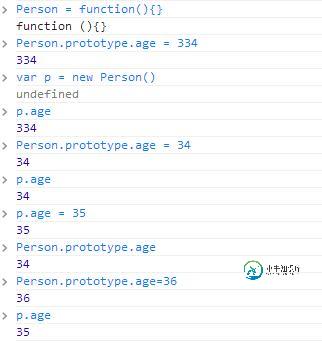Python中的类学习笔记
Python使用中面向对象的语言,支持继承、多态;
定义一个Person类:
>>> class Person:
... def sayHello(self):
... print('hello')
...
>>> Person.sayHello(None)
hello
>>> Person().sayHello()
hello
可以修改Person的类方法
>>> def hack_sayHello(obj):
... print('...hello')
...
>>>
>>> Person.sayHello = hack_sayHello
>>> Person.sayHello(None)
...hello
>>> Person().sayHello()
...hello
>>> sayHello = Person().sayHello
>>> sayHello()
...hello
Person().sayHello也是一个函数,可以赋值给变量,并可以直接调用;
>>> Person.sayHello is Person().sayHello False >>> Person.sayHello == Person().sayHello False
Person.sayHello与Person().sayhello并不是同一个对象,直觉上,Person().sayHello关联(绑定)了一个Person实例,而Person.sayHello是一个类方法;
self参数事实上正是方法和函数的区别:方法将它们的第一个参数绑定到所属的实例上,因此这个参数可以不必提供;
>>> class Person:
... name = 'unkown'
... def sayHello(self):
... print('i\'m ' + name)
...
>>>
>>> Person.sayHello(None)
Traceback (most recent call last):
File "<stdin>", line 1, in <module>
File "<stdin>", line 4, in sayHello
NameError: name 'name' is not defined
>>> p = Person()
>>> p.name = 'wyj'
>>> p.sayHello()
Traceback (most recent call last):
File "<stdin>", line 1, in <module>
File "<stdin>", line 4, in sayHello
NameError: name 'name' is not defined
可见,Python在解析变量时,默认从local scope/global scope中查找;
>>> class Person:
... name = 'unkown'
... def sayHello(self):
... print('i\'m ' + self.name)
...
>>>
>>> Person.sayHello(None)
Traceback (most recent call last):
File "<stdin>", line 1, in <module>
File "<stdin>", line 4, in sayHello
AttributeError: 'NoneType' object has no attribute 'name'
>>> p = Person()
>>> p.name = 'wyj'
>>> p.sayHello()
i'm wyj
访问成员都要通过self,假如以包含name属性的对象调用Person.sayHello(obj),是否可以呢?
>>> class Cat: ... name = 'huanhuan' ... >>> Person.sayHello(Cat()) i'm huanhuan
可以,Python并不限制必须用相同类的实例对象作为参数调用类方法(貌似Python的类机制类似Javascript);
访问控制
Python并不直接支持私有方访问,而是要靠程序员自己把握。
不过,可以在属性名称前加上双下划线而给其私有访问能力(对外不可见);
>>> class Person:
... def __private_method(self):
... print('private')
... def test(self):
... self.__private_method()
...
>>> Person().test()
private
>>> Person().__private_method()
Traceback (most recent call last):
File "<stdin>", line 1, in <module>
AttributeError: 'Person' object has no attribute '__private_method'
实际上,以上下划线打头的方法都有一个_ClassName__methodName的方法
>>> Person._Person__private_method <function Person.__private_method at 0x7fed431a2d90>
调用
>>> Person._Person__private_method(None) private
总之,Python并不能阻止从类外进行方法调用;
类属性以及对象属性
首先,可以为类添加属性,新对象将得到属性的一份拷贝
>>> Person.age = 3 >>> Person().age 3 >>> Person.age = 4 >>> Person().age 4 >>> p = Person() >>> Person.age = 31 >>> p.age 31
对类属性的修改,反映到了先前生成的对象的属性上,这说明类属性和对象的属性共享一个值;
>>> p.age = 34 >>> p.age 34 >>> Person.age 31 >>> Person.age = 99 >>> p.age 34
而一旦对对象的属性的修改,对象属性就拥有了自己的值,并不会反映到类属性上,而对类属性的修改,也不再反映到该对象的属性上;
这种行为与Javascript类似

-
Python 中第一个让人印象深刻的语法就是缩进,Python 跟 js 不同,跟golang 不同,跟 shell script 不同,跟 c 不同,它们并没有要求必须缩进,但是 Python 不同,它就如同 jade 一样,缩进是必须的。
-
本文向大家介绍Python数据类型学习笔记,包括了Python数据类型学习笔记的使用技巧和注意事项,需要的朋友参考一下 带你走进数据类型 一:整数、浮点数 Python中整数和浮点数的定义以及运算和C++都是一样的,我在这里就不需多说了,我就说明一点:Python相对于C/C++而言,定义整数没有int 和 long long 这些区分的,直接赋值即可。这就体现出了Python简洁的功能。 二:布
-
本文向大家介绍python中import学习备忘笔记,包括了python中import学习备忘笔记的使用技巧和注意事项,需要的朋友参考一下 前言 在python的模块有两种组织方式,一种是单纯的python文件,文件名就是模块名,一种是包,包是一个包含了若干python文件的目录,目录下必须有一个文件__init__.py,这样目录名字就是模块名,包里的python文件也可以通过包名.文件名的方式
-
本文向大家介绍Python异常学习笔记,包括了Python异常学习笔记的使用技巧和注意事项,需要的朋友参考一下 异常(exceptions)是Python中一种非常重要的类型,它和语法错误不同,是在程序运行期间引发的错误。Python中内置了很多异常,如IOError,NameError,KeyboardInterrupt等,更多的异常可以点击这里。 异常的意义在于提供一种更加优雅的运行方式,例如
-
本文向大家介绍python web框架学习笔记,包括了python web框架学习笔记的使用技巧和注意事项,需要的朋友参考一下 一、web框架本质 1.基于socket,自己处理请求 2.基于wsgi WSGI,全称 Web Server Gateway Interface,或者 Python Web Server Gateway Interface ,是为 Python 语言定义的 Web 服务
-
本文向大家介绍Python中关于logging模块的学习笔记,包括了Python中关于logging模块的学习笔记的使用技巧和注意事项,需要的朋友参考一下 python的logging模块 python提供了一个日志处理的模块,那就是logging。 导入logging模块使用以下命令: logging模块的用法: 1.简单的将日志打印到屏幕上 会在屏幕上显示出以下内容: WARNING:root

